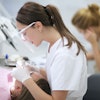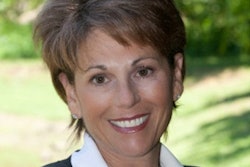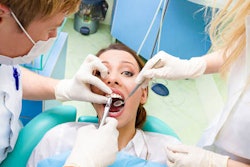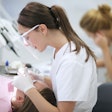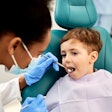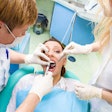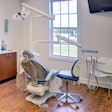
Does expanding a hygienist's scope of practice translate to improved oral healthcare at the state level? Researchers from New York believe it does, according to the results of a survey published this month in Health Affairs.
With the debates about dental therapists and dental telemedicine ongoing, researchers from the University at Albany in New York updated a previous study to investigate if hygienists with an expanded practice options could reduce the oral disease burden.
"Scope of practice for dental hygienists ... had a positive and significant association with having no teeth removed because of decay or disease," wrote lead study author Margaret Langelier and colleagues (Health Affairs, December 2016, Vol. 35:12, pp. 2207-2215).
Langelier is the project director of the Center for Health Workforce Studies at the School of Public Health at the University of Albany, State University of New York.
Professional practice index
As the focus of public health oral healthcare has shifted from treatment to prevention, reaching underserved populations has received increased attention. Fifteen years ago, study authors created a new index to quantify hygienists' scope of practice. With the current study, they wanted to see if any change in index scores also correlated with an expansion of hygienists' scope of practice.
In 2001, the authors created the Dental Hygiene Professional Practice Index (DHPPI), which is comprised of four categories:
- Regulation
- Supervision by practice setting
- Tasks permitted under varying levels of supervision
- Reimbursement
This index quantifies scopes of practice for dental hygienists across the U.S. states and the District of Columbia. Each category has a maximum number of points assigned, based on several variables, with a total maximum for the index of 100 points. Before the creation of the index, the variation among U.S. states' scopes of practice made it a challenge to quantify what impact different required levels of supervision and allowable tasks had on oral healthcare outcomes.
The authors first used the DHPPI to create a composite score for the entire country in 2001. Now, using 2012 data, they updated the nationwide score.
The authors used data from the 2012 Behavioral Risk Factor Surveillance System (BRFSS) survey from the U.S. Centers for Disease Control and Prevention for this study. In the 2001 scores, they used data from the equivalent BRFSS survey.
The mean national composite score on the DHPPI rose to 57.6 in 2014 from 43.5 in 2001. The scores in the four categories that make up the index are shown in the table below.
| Change in DHPPI scores from 2001 to 2014 | ||||
| Regulation (10-point scale) | Supervision (47-point scale) | Tasks (28-point scale) | Reimbursement (15-point scale) | |
| 2001 mean | 7.4 | 19.1 | 14.8 | 2.2 |
| 2014 mean | 7.8 | 27.3 | 18.0 | 4.4 |
The authors also compiled state-by-state scores and found that states that had new or expanded dental hygiene practice models had higher scores in general than states that have not enacted an expanded practice model.
For example, Montana has put into place a limited-access permit that allows hygienists to offer preventive services without the previous authorization or presence of a dentist in some public health settings. That state's score rose from 41 to 89 on the 100-point scale. Likewise, West Virginia's score increased 60 points, according to the authors. That state allows hygienists with a public health permit to provide specific services under direct, general, or even no dental supervision.
Scope of practice
While expanding hygienists' scope of practice remains controversial in states such as Georgia and Mississippi, in April 2016, hygienist Suzanne Newkirk wrote that a 2014 National Governors Association report identified that to increase access to effective interventions that show cost savings, states should consider expanding scope-of-practice laws and change Medicaid reimbursement policies to expand opportunities for all dental professionals, including dental hygienists to practice to the full extent of their licenses.
For the Health Affairs study's limitations, the authors acknowledged that oral health outcome variables directly tied to hygienist intervention were not available, so they used a BRFSS survey question focused on tooth extractions. The authors also could only establish a strong association between dental hygiene scope of practice and no tooth loss in the population because of decay or disease, not a causal relationship.
"It is important for policymakers to consider the impact of scope of practice when investigating strategies to increase the availability of preventive oral health services, especially for underserved populations," the authors concluded.
